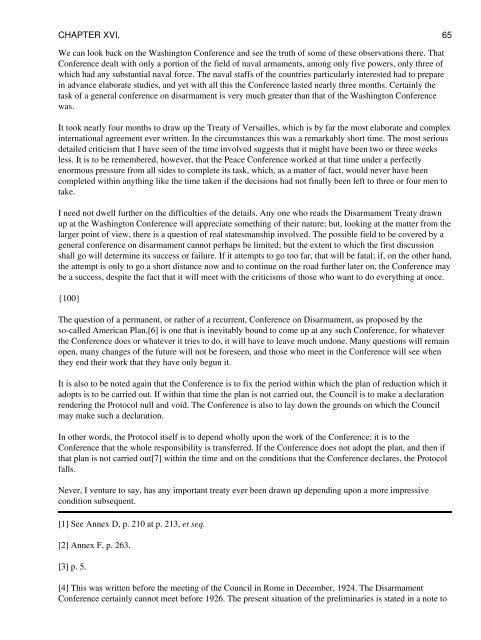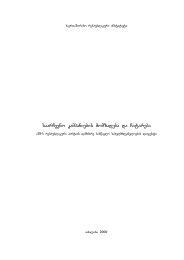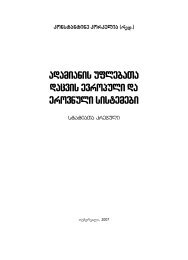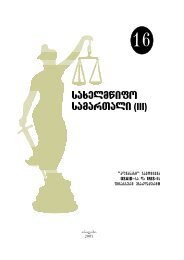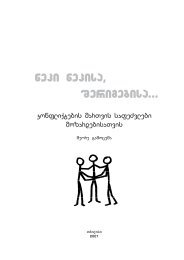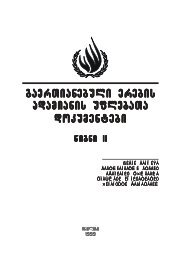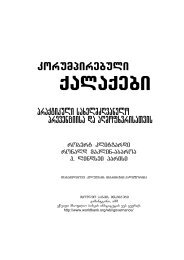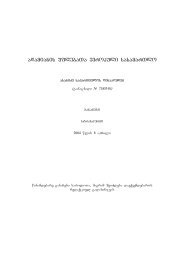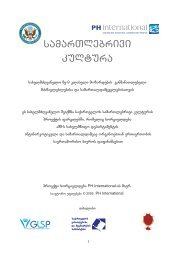The Geneva Protocol, by David Hunter Miller
The Geneva Protocol, by David Hunter Miller
The Geneva Protocol, by David Hunter Miller
Create successful ePaper yourself
Turn your PDF publications into a flip-book with our unique Google optimized e-Paper software.
CHAPTER XVI. 65<br />
We can look back on the Washington Conference and see the truth of some of these observations there. That<br />
Conference dealt with only a portion of the field of naval armaments, among only five powers, only three of<br />
which had any substantial naval force. <strong>The</strong> naval staffs of the countries particularly interested had to prepare<br />
in advance elaborate studies, and yet with all this the Conference lasted nearly three months. Certainly the<br />
task of a general conference on disarmament is very much greater than that of the Washington Conference<br />
was.<br />
It took nearly four months to draw up the Treaty of Versailles, which is <strong>by</strong> far the most elaborate and complex<br />
international agreement ever written. In the circumstances this was a remarkably short time. <strong>The</strong> most serious<br />
detailed criticism that I have seen of the time involved suggests that it might have been two or three weeks<br />
less. It is to be remembered, however, that the Peace Conference worked at that time under a perfectly<br />
enormous pressure from all sides to complete its task, which, as a matter of fact, would never have been<br />
completed within anything like the time taken if the decisions had not finally been left to three or four men to<br />
take.<br />
I need not dwell further on the difficulties of the details. Any one who reads the Disarmament Treaty drawn<br />
up at the Washington Conference will appreciate something of their nature; but, looking at the matter from the<br />
larger point of view, there is a question of real statesmanship involved. <strong>The</strong> possible field to be covered <strong>by</strong> a<br />
general conference on disarmament cannot perhaps be limited; but the extent to which the first discussion<br />
shall go will determine its success or failure. If it attempts to go too far, that will be fatal; if, on the other hand,<br />
the attempt is only to go a short distance now and to continue on the road further later on, the Conference may<br />
be a success, despite the fact that it will meet with the criticisms of those who want to do everything at once.<br />
{100}<br />
<strong>The</strong> question of a permanent, or rather of a recurrent, Conference on Disarmament, as proposed <strong>by</strong> the<br />
so-called American Plan,[6] is one that is inevitably bound to come up at any such Conference, for whatever<br />
the Conference does or whatever it tries to do, it will have to leave much undone. Many questions will remain<br />
open, many changes of the future will not be foreseen, and those who meet in the Conference will see when<br />
they end their work that they have only begun it.<br />
It is also to be noted again that the Conference is to fix the period within which the plan of reduction which it<br />
adopts is to be carried out. If within that time the plan is not carried out, the Council is to make a declaration<br />
rendering the <strong>Protocol</strong> null and void. <strong>The</strong> Conference is also to lay down the grounds on which the Council<br />
may make such a declaration.<br />
In other words, the <strong>Protocol</strong> itself is to depend wholly upon the work of the Conference; it is to the<br />
Conference that the whole responsibility is transferred. If the Conference does not adopt the plan, and then if<br />
that plan is not carried out[7] within the time and on the conditions that the Conference declares, the <strong>Protocol</strong><br />
falls.<br />
Never, I venture to say, has any important treaty ever been drawn up depending upon a more impressive<br />
condition subsequent.<br />
[1] See Annex D, p. 210 at p. 213, et seq.<br />
[2] Annex F, p. 263.<br />
[3] p. 5.<br />
[4] This was written before the meeting of the Council in Rome in December, 1924. <strong>The</strong> Disarmament<br />
Conference certainly cannot meet before 1926. <strong>The</strong> present situation of the preliminaries is stated in a note to


